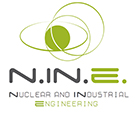OBJECTIVES
The mission of FONESYS is to keep the code limitations ‘under control’ and to provide guidance for code improvements.
Main objectives
- To create a common ground for discussing envisaged improvements in various areas of system thermal-hydraulics, promoting a cooperation aimed at the improvement of the SYS-TH codes and their application in the licensing process and safety analysis.
- To identify the area of improvement and share experience on the Graphical User Interface, SYS-TH code coupling with other numerical tools as 3D neutron kinetics, fuel pin mechanics, CFD, CMFD.
- To share the experience on code inadequacies and cooperate in identifying experiments and/or code-to-code benchmarks for resolving the deficiencies.
- To share the user experience on code scalability, applicability, and uncertainty studies.
- To establish the acceptable and recognized procedures and thresholds for the V&V processes.
- To maintain and improve the user expertise and the user guidelines for applying the code.
- To share and resolve the safety issues and new licensing guide.
Working modalities
- Developing a common understanding (e.g. by collecting different opinions and achieving a consensus document) about: SYS-TH codes (the definitions, the requirements, the capabilities, the current status), and limitations for SYS-TH codes (balance equations, numerical solution, user effect, from applications).
- Identification of specific code limitations not covered in the validation process in order to address the areas of investigations.
- Establishment of validation procedures for 3D SYS-TH codes for assigned phenomenon based complementary experiments performed in IET facilities and 3D separate effect test facilities.
- Running and collecting results from ‘specific additional’ V&V – Benchmark activities.
- Attending regular workshops, possibly creating ‘ad-hoc’ groups for special topics.
- Addressing the possible skepticism from international community and answering questions.
- Providing recommendations to prioritize code improvements and required experiments.
Road map for FONESYS - List of topics and subtopics for the operation for FONESYS
| FONESYS TOPICS | FONESYS SUBTOPICS |
|
|
|
|
||
|
|
|
|
|
|
|
|
|
|
|
|
|
|
|
|
|
|
|
||
|
||
|
|
|
|
|
|
|
||
|
|
|
|
|
|
|
|










